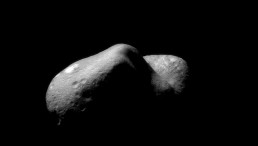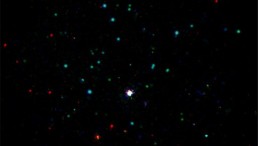Standford University researchers developed a technique in measuring the quality of quantum dots in comparison with single crystal semiconductors. Medical imaging tools, camera sensors, and solar panels are products in advanced electronics that use these single crystal semiconductors.
"Traditional semiconductors are single crystals, grown in vacuum under special conditions. These we can make in large numbers, in a flask, in a lab and we've shown they are as good as the best single crystals," said David Hanifi, a Standford graduate student in Chemistry at Stanford and co-lead author of the paper written about this work, published March 15 in Science.
Prior to the research, no method has been conclusive in measuring the efficiency of quantum dots. Hanifi and his colleagues were able to create a method in measuring the efficiency of quantum dots through the light absorbed and reemitted.
Paul Alivisatos and Alberto Salleo collaborated in this study. Alivisatos, a pioneer in quantum dot research is the senior author of the paper from the University of California, Berkeley while Salleo is a professor of materials science and engineering at Stanford. This measurement technique will serve as a jumping board in the developing materials and technologies that determine the efficiency of semiconductors.
"These materials are so efficient that existing measurements were not capable of quantifying just how good they are. This is a giant leap forward," said Alivisatos. "It may someday enable applications that require materials with luminescence efficiency well above 99 percent, most of which haven't been invented yet."
Benefits of quantum dots
The use of quantum dots holds a number of benefits including the exclusion of the use of expensive fabrication equipment. Another is its possibility to surpass or approach the performance of the best crystals. Their customizability enables them to affect the wavelength of light they emit by changing their size. This is advantageous to color-based applications such as TVs, computer monitors, or tagging biological samples.
Challenges of quantum dots
The minute size of quantum dots requires billions of them to function a large, perfect single crystal. The increased number of quantum dots also increases the defects that could affect performance. Quantum dots emit more than 99 percent of the absorbed light but this did not include issues regarding their potential for defects.
"We want to measure emission efficiencies in the realm of 99.9 to 99.999 percent because, if semiconductors are able to reemit as light every photon they absorb, you can do really fun science and make devices that haven't existed before," said Hanifi.
How the technique works
The measurement technique involves both assessing light emission and excess heat. Inefficient emission involves excess heat. This method has been used with other materials but it was only utilized in quantum dots just recently. It has been found out that the technique is 100 times more precise than others. The team found out that 99.6 percent of absorbed light was emitted by quantum dots and is comparable to the emissions of the best single crystals.
"It was surprising that a film with many potential defects is as good as the most perfect semiconductor you can make," said Salleo, who is the co-author of the paper.













![Blue UFO Spotted in Philadelphia; Object Descends in Delaware River [Watch]](https://1721181113.rsc.cdn77.org/data/thumbs/full/53112/258/146/50/40/blue-ufo-spotted-in-philadelphia-object-descends-in-delaware-river-watch.jpeg)
